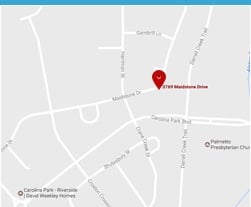 In order for your electronics business to attract and satisfy customers, you need to be focusing on the very basics of product design and manufacture: PC boards. As the demands of the consumer market change, and technological processes evolve, so must your way of thinking about printed circuit boards. Although it's true that through-hole mounting was the standard for PC board construction for years, surface mount technology (SMT) is the 'new kid on the block', and it isn't going anywhere anytime soon.
In order for your electronics business to attract and satisfy customers, you need to be focusing on the very basics of product design and manufacture: PC boards. As the demands of the consumer market change, and technological processes evolve, so must your way of thinking about printed circuit boards. Although it's true that through-hole mounting was the standard for PC board construction for years, surface mount technology (SMT) is the 'new kid on the block', and it isn't going anywhere anytime soon.
In the years since its introduction in the 1980s, SMT has taken the manufacturing industry by storm. It is now the most popular method for building PC boards. In order to understand why this is the case, though, you must have a thorough understanding of how both processes work. In this post we will explore how both through-hole and SMT methods related to the construction of PC boards, their key differences, and when and how each can be applied.
In the Beginning: Through-Hole Technology
Many decades went by in which through-hole methods were undisputed in terms of the production of printed circuit boards. In fact, nearly all boards were constructed following these methods. With the use of through-hole technology, leads on electrical components are inserted into holes that have been previously drilled on the board. These components are then soldered to pads which are located on the opposite side of the board. The strong mechanical bonds that are created in this process make through-hole mounting a very reliable way of manufacturing boards, but the fart that so much drilling is required makes it more expensive than other methods. Another hangup has to do with the fact that the holes drilled tend to restrict the area available for routing signal traces on the layers that are located immediately below the top layer.
Moving Forward with Surface Mount Technology
Recognizing the problems associate with through-hole mounting, industry professionals sought out a new way of doing things. Thus, surface mount technology came to be. Instead of drilling holes, the SMT process makes it possible for electrical components to be directly mounted on the the surface of PC boards. In many cases, the components used have smaller leads or no leads a tall which makes them smaller and more compact. As a result, higher circuit densities may be achieved on smaller boards. This is important, as the consumer market is demanding smaller, more lightweight electronic devices than ever before. In addition to everything else, SMT is nearly always less expensive than other methods, such as through-hole technology. By taking advantage of SMT methodologies, electronics businesses can scale back their costs while still providing high quality products that will meet all of their customer's expectations.
Putting it all Together: Key Differences
Some of the biggest differences between using through-hole or SMT methods to construct PC boards include:
-
Space - Through-hole mounting presents a number of problems that are related to a lack of space. By eliminating the need to drill holes and waste surface area, surface mount technology resolves this issues and allows for a more densely constructed PC board.
-
Leads - In order for through-hole technology to work, all electrical components must have lead wires to pass through the drilled holes. In SMT, this need is significantly reduced and can even be eliminated as components can be directly mounted to the board.
-
Cost - The components used in the construction of SMT boards are usually less expensive than in through-hole technology.
-
Speed - The compact size of boards manufactured through SMT make them better suited to high-circuit speeds.
-
Production - SMT tends to lend itself to assembly automation. Ultimately, this means that a higher production volume can be achieved for less cost.
Although still relevant in certain specific scenarios, through-hole methods are generally considered to be a way of the past. By embracing surface mount technology, you can take your boards and your business to higher levels.





